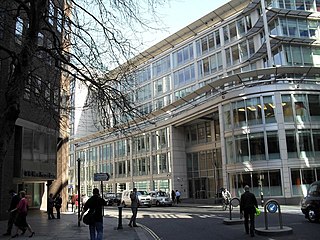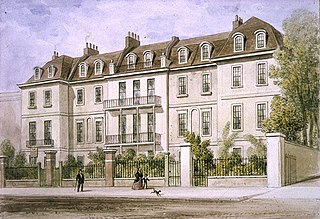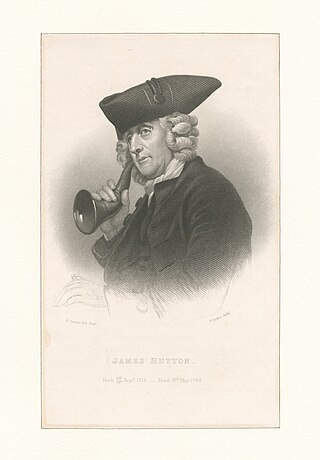
Moravian University is a private university in Bethlehem, Pennsylvania. The institution traces its founding to 1742 by Moravians, descendants of followers of the Bohemian Reformation under John Amos Comenius. Founded as a girls school in 1742, the College itself was founded as the Moravian College and Theological Seminary in 1807 and was accredited in 1863. In 2021, the College was elevated to a University. Moravian University uses the foundation of the Girls school as their foundation date which would make them the sixth-oldest college in the United States.

The Moravian Church, or the Moravian Brethren, formally the Unitas Fratrum, is one of the oldest Protestant denominations in Christianity, dating back to the Bohemian Reformation of the 15th century and the Unity of the Brethren founded in the Kingdom of Bohemia, sixty years before Luther's Reformation.

St James's Church, Piccadilly, also known as St James's Church, Westminster, and St James-in-the-Fields, is an Anglican church on Piccadilly in the centre of London, England. The church was designed and built by Sir Christopher Wren.

God's Acre is a churchyard, specifically the burial ground. The word comes from the German word Gottesacker, an ancient designation for a burial ground. The use of "Acre" is related to, but not derived from the unit of measurement and can be of any size. In the early 17th century the term was used as a translation of the German, but by the end of the century, it was accepted as an English term.
The Fetter Lane Society was the first flowering of the Moravian Church in Britain, and an important precursor to Methodism. It was founded in 1738. Although the original meeting house was destroyed in the mid-20th century, the society still meets in London, and is part of the British Province of the Moravian Church.

The Moravian Church of the British Province is part of the worldwide Moravian Church Unity. The Moravian Church in Britain has bishops in apostolic succession.

Fetter Lane is a street in the ward of Farringdon Without in the City of London, England. It forms part of the A4 road and runs between Fleet Street at its southern end and Holborn.

Lindsey House is a Grade II* listed villa in Cheyne Walk, Chelsea, London. It is owned by the National Trust but tenanted and only open by special arrangement.

Imperial Count Christian Renatus von Zinzendorf und Pottendorf was the charismatic leader of the Single Brethren's Choir of the Moravian Church and of Herrnhaag, a Christian religious community built near Büdingen by his father, Count Nicholas Ludwig, head of the Brüdergemeine or Moravian Unity. Christian Renatus, affectionately known as Christel, took his father’s marriage religion (Ehereligion) literally, proclaiming himself to be the living "Sidewound of Christ" in 1748, which meant he was the embodiment of Christ's sacrificial and compassionate love.

Herrnhaag was a communal spiritual centre for the Moravian Unity, an early form of Protestantism. It and Marienborn, a nearby sister community, are located in the Wetterau, an area of Hesse, north of Frankfurt am Main in Germany.

Fairfield Moravian Church and its surrounding settlement was founded in 1785 in Fairfield, Droylsden, Lancashire, England. It was founded by Benjamin La Trobe as a centre for evangelistic work for the Moravian Church in the Manchester area. Numbers 15, 28 and 30 Fairfield Square are Grade II* listed buildings.

Fulneck Moravian Church and its associated settlement were established on the Fulneck estate, Pudsey, in the West Riding of Yorkshire, England, in 1744 by Count Nicolaus Ludwig von Zinzendorf, a Moravian Bishop and Lutheran priest, following a donation of land by the evangelical Anglican clergyman, Benjamin Ingham. Fulneck is now part of the City of Leeds, West Yorkshire.

Benjamin Ingham was an English cleric who was the founder of the Moravian Church in England as well as his own Inghamite societies.

Essex Street Chapel, also known as Essex Church, is a Unitarian place of worship in London. It was the first church in England set up with this doctrine, and was established when Dissenters still faced legal threat. As the birthplace of British Unitarianism, Essex Street has particularly been associated with social reformers and theologians. The congregation moved west in the 19th century, allowing the building to be turned into the headquarters for the British and Foreign Unitarian Association and the Sunday School Association. These evolved into the General Assembly of Unitarian and Free Christian Churches, the umbrella organisation for British Unitarianism, which is still based on the same site, in an office building called Essex Hall. This article deals with the buildings, the history, and the current church, based in Kensington.

John Gambold, was bishop of the Unitas Fratrum.
John Valentine Haidt (1700–1780) was a German-born American painter and Moravian preacher in Pennsylvania.

Meadrow Unitarian Chapel is a Unitarian chapel in the Farncombe area of Godalming, Surrey, England. It is part of the London District and South Eastern Provincial Assembly of Unitarian and Free Christian Churches, one of 16 districts within the General Assembly of Unitarian and Free Christian Churches, the umbrella organisation for British Unitarians.

Beaufort Street is a street in Chelsea, London SW3. It runs north to south from Fulham Road to Cheyne Walk at its junction with Battersea Bridge, and is bisected by the King's Road.
Mary Stonehouse was a British heiress who was a worker, supporter, and deaconess of the Moravian Church. She was adopted as an adult by the church's founder who named her Maria Theresa after his deceased daughter.

James Hutton was an English Moravian minister and bookseller.
















